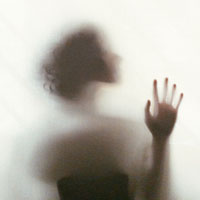Nightmares and bad dreams among individuals with musculoskeletal pain: a link to vitamin D and calcium

Submitted: March 9, 2021
Accepted: July 17, 2021
Published: August 24, 2021
Accepted: July 17, 2021
Abstract Views: 7540
PDF: 735
HTML: 79
HTML: 79
Publisher's note
All claims expressed in this article are solely those of the authors and do not necessarily represent those of their affiliated organizations, or those of the publisher, the editors and the reviewers. Any product that may be evaluated in this article or claim that may be made by its manufacturer is not guaranteed or endorsed by the publisher.
All claims expressed in this article are solely those of the authors and do not necessarily represent those of their affiliated organizations, or those of the publisher, the editors and the reviewers. Any product that may be evaluated in this article or claim that may be made by its manufacturer is not guaranteed or endorsed by the publisher.
Similar Articles
- Gabriela Pap, Fritz Lackinger, Gerhard Kamp, Henriette Löffler-Stastka, Analysis of a dream series by the Dream Coding System developed by Ulrich Moser , Research in Psychotherapy: Psychopathology, Process and Outcome: Vol. 24 No. 2 (2021): SPECIAL ISSUE "Working on dreams, from psychotherapy to neuroscience"
- Elham Qanbari Alaee, Omid Saed, Sahel Khakpoor, Reza Ahmadi, Mahsa Ali Mohammadi, Majid Yoosefi Afrashteh, Zekrolah Morovati, The efficacy of transdiagnostic cognitive behavioural therapy on reducing negative affect, anxiety sensitivity and improving perceived control in children with emotional disorders - a randomized controlled trial , Research in Psychotherapy: Psychopathology, Process and Outcome: Vol. 25 No. 1 (2022)
- Lidia Borghi, Federica Bonazza, Giulia Lamiani, Alessandro Musetti, Tommaso Manari, Maria Filosa, Maria C. Quattropani, Vittorio Lenzo, Maria Francesca Freda, Daniela Lemmo, Emanuela Saita, Roberto Cattivelli, Gianluca Castelnuovo, Elena Vegni, Christian Franceschini, Dreaming during lockdown: a quali-quantitative analysis of the Italian population dreams during the first COVID-19 pandemic wave , Research in Psychotherapy: Psychopathology, Process and Outcome: Vol. 24 No. 2 (2021): SPECIAL ISSUE "Working on dreams, from psychotherapy to neuroscience"
- Linnea Nissling, Sandra Weineland, Kristofer Vernmark, Ella Radvogin, Anna-Karin Engström, Sara Schmidt, Eva Nieto Granberg, Elin Larsson, Timo Hursti, Effectiveness of and processes related to internet-delivered acceptance and commitment therapy for adolescents with anxiety disorders: a randomized controlled trial , Research in Psychotherapy: Psychopathology, Process and Outcome: Vol. 26 No. 2 (2023)
- Brigitte Holzinger, Franziska Nierwetberg, Larissa Cosentino, Lucille Mayer, DreamSenseMemory - a Gestalt-based dream-work approach embracing all our senses , Research in Psychotherapy: Psychopathology, Process and Outcome: Vol. 24 No. 2 (2021): SPECIAL ISSUE "Working on dreams, from psychotherapy to neuroscience"
- Violeta Stefania Rotărescu, Diana Bianca Matei, Ioana Alexandra Mircea, Andreea Maria Mirescu, Bogdan George Nedelescu, Daniela Georgiana Nedelea, Alexandra Nicoleta Raluca Neagu, Alexandru George Necșulescu, Gabriel Angelo Oteșanu, Lucian Constantin Tudor, How anxious did you feel during lockdown? The roles resilience, living environment, and gender play on the level of anxiety state during pandemic isolation , Research in Psychotherapy: Psychopathology, Process and Outcome: Vol. 23 No. 3 (2020)
- Mahbobe Ghavidel Heydari, Mahmoud Shirazi, Gholam Reza Sanagouyemoharer, The effect of positive psychotherapy in test anxiety among Zahedan students with hemophilia , Research in Psychotherapy: Psychopathology, Process and Outcome: Vol. 21 No. 1 (2018)
- Samantha Reis, Emily L. Matthews, Brin F.S. Grenyer, Characteristics of effective online interventions: implications for adolescents with personality disorder during a global pandemic , Research in Psychotherapy: Psychopathology, Process and Outcome: Vol. 23 No. 3 (2020)
- Christopher B. Harte, Raymond C. Hawkins II, Impact of personality disorder comorbidity on cognitive-behavioral therapy outcome for mood and anxiety disorders: results from a university training clinic , Research in Psychotherapy: Psychopathology, Process and Outcome: Vol. 19 No. 2 (2016)
- Antonino Carcione, Marta Santonastaso, Francesca Sferruzza, Ilaria Riccardi, Esoteric power, useless, useful: considerations about dreams in cognitive-behavioural therapy , Research in Psychotherapy: Psychopathology, Process and Outcome: Vol. 24 No. 2 (2021): SPECIAL ISSUE "Working on dreams, from psychotherapy to neuroscience"
You may also start an advanced similarity search for this article.

 https://doi.org/10.4081/ripppo.2021.533
https://doi.org/10.4081/ripppo.2021.533





